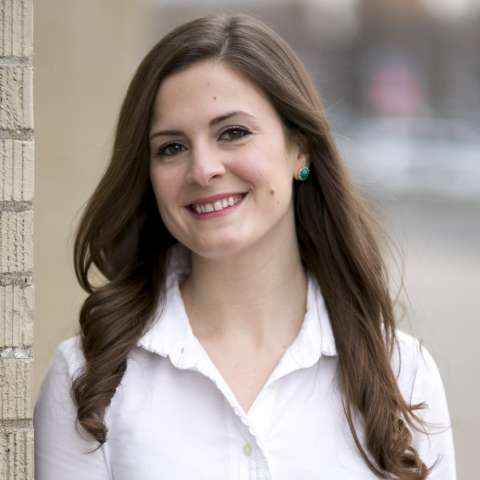To open the second half of its 50th anniversary season, Boston Ballet presents a trio of contemporary works that showcases the company’s ever-expanding repertory and deepening talent pool.
Opening the program is Resident Choreographer Jorma Elo’s C. to C. (Close to Chuck) Reborn – a piece that was restaged for Boston Ballet’s Thursday première from its original incarnation for American Ballet Theatre in 2007. The result is a powerful and engaging piece that showcases the remarkable talent of six of Boston Ballet’s finest dancers. Kathleen Breen Combes, Lia Cirio, Whitney Jensen, Jeffrey Cirio, John Lam, and Sabi Varga commanded the stage with a brilliant commitment to Elo’s dynamic choreography and effortless interpretation of solo pianist Bruce Levingston’s composition and performance of Philip Glass’ A Musical Portrait of Chuck Close.
Chuck Close, a prominent American artist known for his large-scale portraits in a range of media, suffered a spinal artery collapse in 1988 that left him paralyzed from the neck down. Close regained some movement in his arms and has adapted his painting style to accommodate the broader strokes he is able to make with a paintbrush attached to his wrist. Jorma Elo’s C. to C. reflects on Close’s overcoming his limitations – the choreography begins slow and controlled, the dancers wearing weighty black skirts and forming angular shapes in their pairings. The choreography builds and sections vary from melancholic to energetic, grounded adagio to elevated allegro, and in accordance with the movements, the skirts are shed and donned throughout the piece, with an occasional peeling back of the front flap to reveal a portrait of Close imbedded on the reverse side.
Presiding over the stage is a self-portrait of Close painted in Close’s more recently adapted fragmented style, his enormous bespectacled eyes filling much of the backdrop. Close’s gaze seems to serve as a reminder to both the dancers and audience of the resilience of the human body and spirit and just how far one can rise above perceived limitations.
The second piece in the trio of contemporary works is a world première of José Martinez’s Resonance. Boston Ballet is the first company in North America to commission a ballet by Martinez, a former Étoile of the Paris Ballet de l'Opera and now the artistic director of the Spanish National Dance Company. The ballet is set to a piano score by Franz Liszt, which is performed by two pianists, one on stage and one off. The piece begins with principal dancer Lia Cirio’s shadow, cast against the large movable wall pieces that comprise the ballet’s set, preceding her slow walk onto the stage. Lia dances with a beautifully pervading melancholy that contrasts with the sharp and energetic choreography set on soloist Dusty Button. This is the first time that I truly took notice of Button – she was a commanding presence and executed the piece flawlessly. Another stand-out was Alejandro Virelles – a new addition to the company this season – who partnered Button in a memorable pas de deux that was performed downstage while dancers spun one of the moveable wall pieces to form a sort of revolving door upstage, behind which the dancers would disappear and reemerge. Virelles’ technique is exacting, his lines are elegant and his presence is strong. For me, this duet was the one moment where the ballet came alive, with set pieces, dancers and music all working in concert. At times during Resonance, the stage felt overcrowded with dancers (nineteen in the cast) and cluttered with set pieces. The group choreography, with hints of Balanchine’s jazzy diagonal arms and legs, wasn’t quite as clean and sharp as I know the company are capable.
Closing the program is Jiři Kylián’s Bella Figura – a piece that Boston Ballet has featured regularly since its first performance of the work in 2011. Watching Bella Figura is like delving into a dream formed in the very back the mind, where unique ideas and memories gathered since birth have emerged from their silos to form strange patterns and odd juxtapositions that somehow work in concert to create a coherent experience that leaves one reeling long after awakening. Once again, Boston Ballet expertly executed Kylián’s work, with nine dancers, led by Rie Ichikawa, effortlessly moving from reflective ethereal moments to quick and spastically humorous ones – there is something so amusing about elegant ballerinas bending forward, cocking one hip to the side and wiggling their arms about like strands of spaghetti. There is only so much one can say about Bella Figura to help readers understand the experience of watching its beauty unfold – it is truly a you-just-have-to-see-it ballet. With the company placing it in the repertory archive after this season, you have to see it now.


